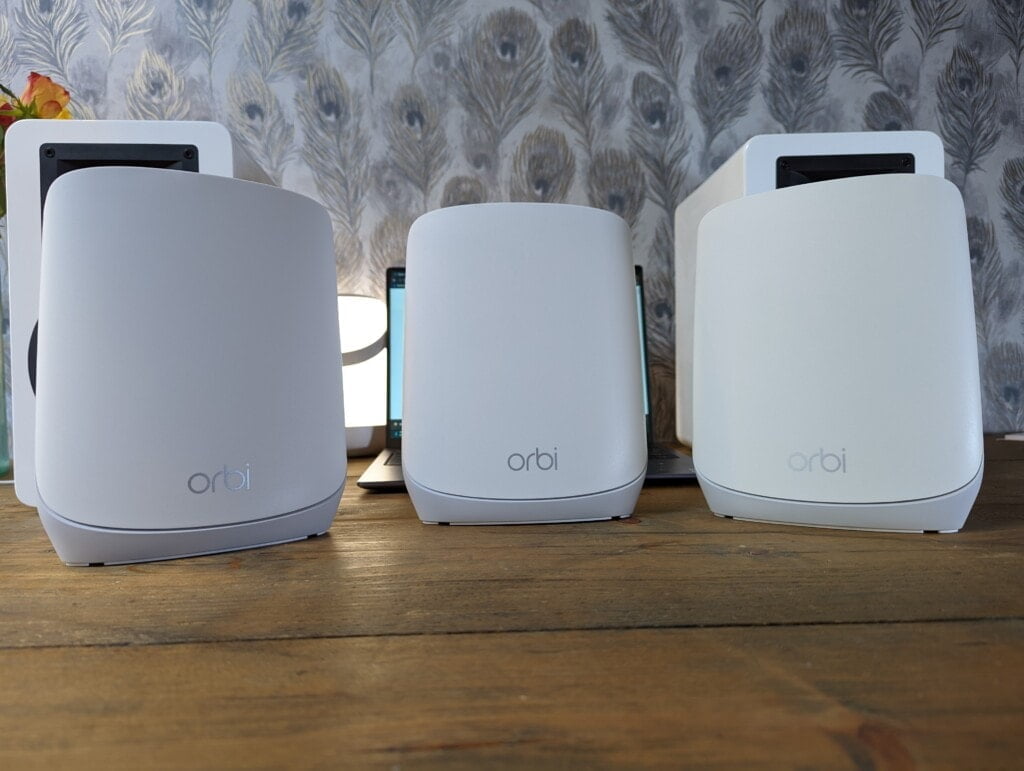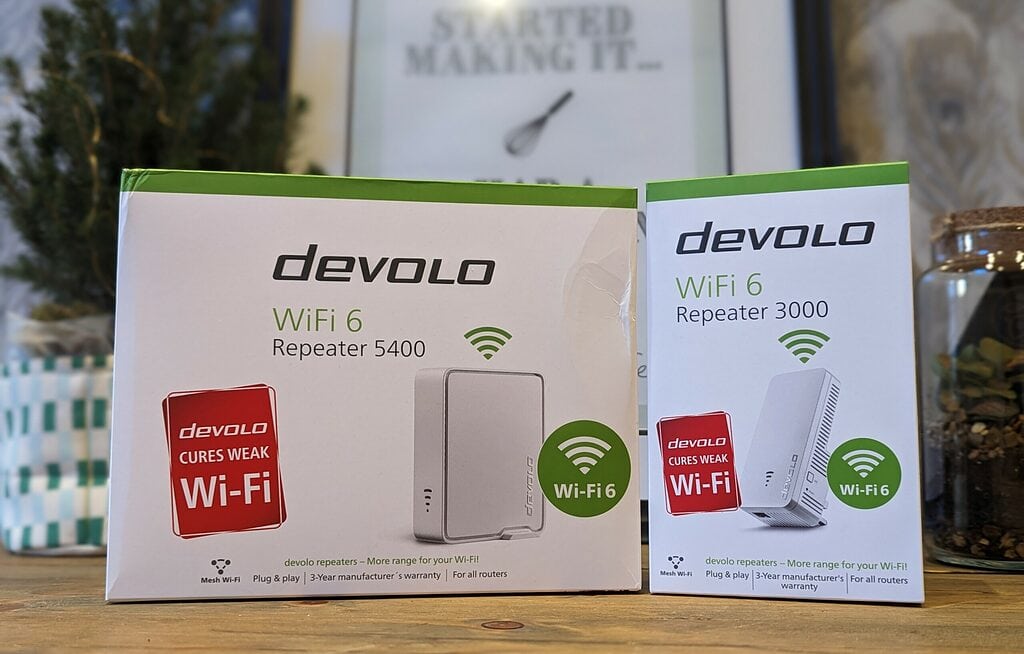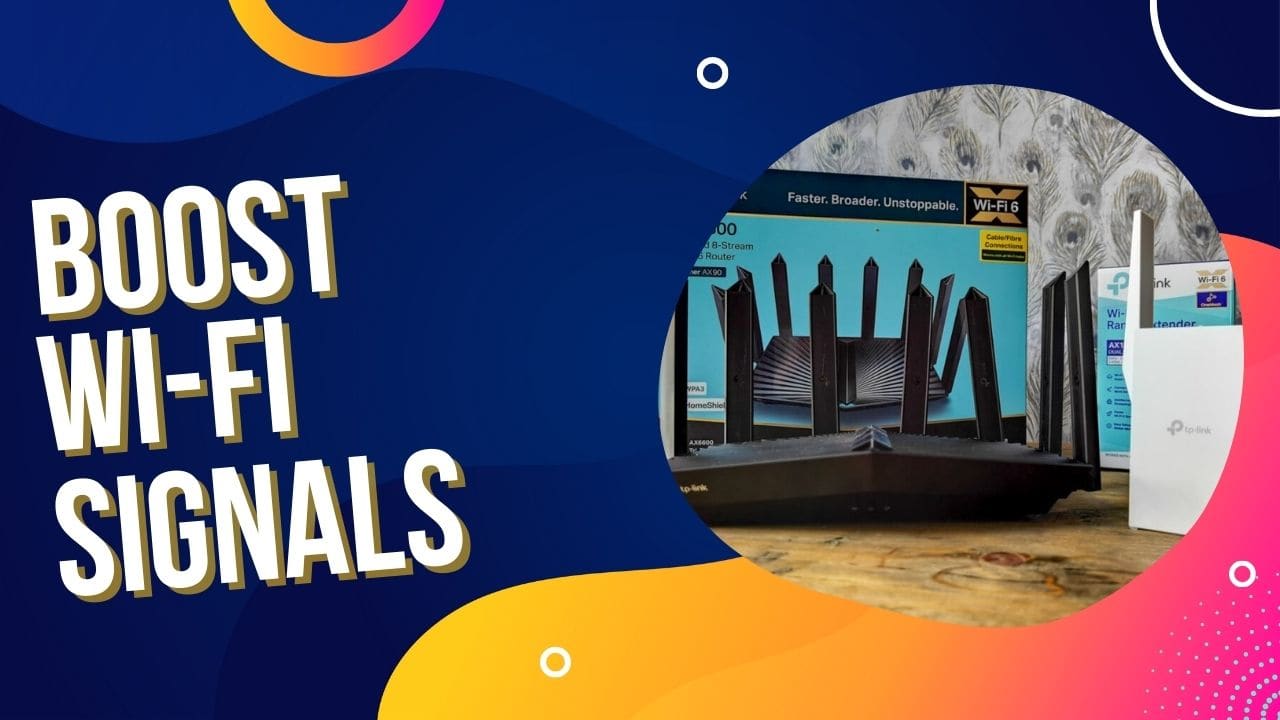Any links to online stores should be assumed to be affiliates. The company or PR agency provides all or most review samples. They have no control over my content, and I provide my honest opinion.
Walls are the bane of WiFis’ existence. When you see the coverage claims from companies, it is always for open spaces, as if we all live frolicking outdoors.
In the UK, many of us live in older homes, and that means thick brick-built internal walls which are not kind to our WiFi. Or, for businesses, you may be stuck in a concrete and metal faraday cage.
To make matters worse, in a lot of homes, the Internet rarely enters the property in the ideal location. Most medium-sized homes will therefore struggle with WiFi signals.
In general, there is not much you can do to physically boost the signal through a wall from your existing router, but there are plenty of ways to improve the signal around your home or business.
Common recommendations that are probably not worth trying

Depending on your router, it can be possible to make adjustments to its settings that can theoretically boost performance. Some people may suggest boosting the power that the router broadcasts the WiFi at, but there is a legal limitation to how this can go, and it is not much use if the corresponding client doesn’t have enough power to send data back.
A lot of websites recommend upgrading your firmware. You should certainly keep it up to date, and it is possible that an OEM may push an update that improves performance. Some routers can accept custom firmware such as DD-WRT. That’s certainly worth considering, and it’s fun to experiment with, but I wouldn’t recommend it to your average joe.
Another recommendation is to upgrade the antennas. In general, the antennas on routers are well-tuned for that specific router. Most brands now have the antennas completely integrated into the router now anyway. The only time an antenna is useful is if you have a 4G/5G router and want to use an outdoor/external antenna for improved reception.
Experiment with router location
Before I jump into recommending expensive solutions, you could try and relocate your router to be more central to your home.
In reality, this is unlikely to be practical because your router will be where your fibre enters your home, but you could use a thing/flat ethernet cable and run it to a different part of the room that’s a bit closer to where you want the WiFi.
Use a Mesh WiFi System

The best overall recommendation for the vast majority of people will be to invest in a mesh WiFi system. These vary in price and performance, so you will need to consider how important your WiFi is and how fast you need it.
| Preview | Product | Rating | Price | |
|---|---|---|---|---|

| MERCUSYS Halo H50G(3-pack) AC1900Mbps Mesh WiFi System,... |
£79.98 | Buy on Amazon |
On the more affordable end of the spectrum, you have the Mercusys Halo H50G, which is just £77 for a three-pack system. I gave my review sample to a friend, and they have been using it for over a year and love it. Alternatively, there is the TP-Link Deco S4.
| Preview | Product | Rating | Price | |
|---|---|---|---|---|

| MERCUSYS Halo H80X(3-pack) AX3000Mbps Mesh WiFi 6 System,... |
£129.99 | Buy on Amazon |
The Mercusys H80X is probably the cheapest WiFi 6 mesh system you will find and I thought it was superb.
| Preview | Product | Rating | Price | |
|---|---|---|---|---|

| NETGEAR Orbi Mesh WiFI System (RBK762S) |WiFi 6 Router with... |
£309.99 | Buy on Amazon |
If performance is important to you, then my current favourite mesh WiFi system is the tri-band Netgear Orbi 760 series. This is available in a 2-pack for £370 or 3-pack for £500. It is expensive, but it is a tri-band system meaning that one of the WiFi bands is dedicated to passing the data back to the router. If you have gigabit Internet or require high-speed local file transfers, then I’d highly recommend this.
There are plenty of other options, too. I have never reviewed one, but ASUS have some highly competitive options compared to Netgear. If money is no object, then the Netgear Orbi RBKE963 is the most advanced system on the market.
Upgrade your router

I am mentioning this after the mesh system because I think most people would be best going directly for a mesh system.
However, if you don’t have a huge property and only have minor issues, then its worth upgrading your router. The ISP-supplied models are always awful, and this is a good recommendation regardless of the quality of your WiFi.
Most decent quality brands like Netgear, TP-Link and ASUS should provide better performance than your ISP router.
In this scenario, I’d consider a router than could later be upgraded to mesh. TP-Link has OneMesh routers, while ASUS use AiMesh. Any router with these technologies can then be paired up with other routers or extenders with the same technology.
Use a WiFi Extender / Repeater

I much prefer mesh systems to a WiFi extender, but if you just need to boost the WiFi through a wall to a less important area of your home, then you can get away with an extender.
These work basically the same as a mesh system, but they often lack some of the standards that are used in a mesh system that allows you to walk around you home using one WiFi SSID name. You’d typically need a separate SSID, so you might have MyHouseWiFi and MyHouseWiFi_2.
I have reviewed some cheap options, and TP-Link seems to be the best brand if you want something affordable. TP-Link also has a range of mesh WiFi extenders that will work with TP-Link OneMesh routers. So it could be work getting something like the RE500X, and you could always get a OneMesh router at a later date.
I also recently reviewed the Devolo 5400 & 3000 WiFi 6 repeaters. These mimic a mesh system, using the same WiFi name as your main router. They are a little pricey, though.
Use an access point
I personally think access points are the ultimate solution. You can often wire up the satellites of a mesh system to work as a wired access point, so you have some flexibility.
Many access points now also have a built-in mesh function.
However, normally an access point is wired in via Ethernet, and they are typically powered using power over Ethernet (POE). Therefore, ideally, you would wire them into a POE switch.
The main problem is that running Ethernet across your house and between rooms is impractical and will often cost a lot if you get a professional to do it.
If you can do this, though, they provide the best performance as they will be able to extend your WiFi without any drop in performance to different parts of your home.
| Preview | Product | Rating | Price | |
|---|---|---|---|---|

| Zyxel AX1800 Dual-band WiFi6 Wireless Cloud Access Point |... |
£64.99 | Buy on Amazon |
I currently use Netgear WAX615 access in my house, and I was using Zyxel previously. The Zyxel NWA50AX is a good affordable option, Netgear has the WAX214, which is about £5 more, or they have the desktop WAX204 model, which is just £68.
Use a powerline WiFi extender or mesh system
| Preview | Product | Rating | Price | |
|---|---|---|---|---|

| Devolo Magic 2 Wi-Fi 5 Next Whole Home Wi-Fi Kit | £347.47 | Buy on Amazon |
I’d normally opt for a mesh system or WiFi extender before trying powerline. Powerline extenders bypass trying to use WiFi to talk to the router; they instead pass data back over the electrical cables within your home.
The beauty of this approach is that it completely ignores your walls. The downside is that it is dependent on the quality of your home’s wiring. A new build will probably have excellent performance, but new builds also often have thin stud walls. It’s old buildings with brick walls that WiFi often struggles in, and these tend to have very old wiring.
However, if you have had no luck with a normal mesh system or extender, then I can strongly recommend either the Devolo WiFi kits or their full mesh system.
TP-Link also has the Deco P9 Whole Home Powerline Mesh WiFi System, which is quite affordable, and it looks like they have finally released a new WiFi 6 model, the TP-Link Deco PX50.
Use a MoCA extender/mesh system
It is a similar concept to powerline, but rather than using your home’s electrical cable, it uses coaxial cable that may have been installed at some point in your home to distribute TV signals.
I think this is more of a US thing than UK. However, distributing the TV signal via coax used to be (or still is) common, and many people still use it for Freeview. Reddit suggests that it works perfectly well in the UK.
MoCA should typically provide superior performance than powerline, and MoCa 2.5 is rated for 2.5Gbps.
The MoCA devices listed on Amazon are all just to create an ethernet port, they cost quite a lot of money, and you’d then need to buy an access point to compliment this. However, if you already have coax around your home, this will likely provide the best overall performance without the hassle of running Ethernet everywhere.
At CES 2023, ASUS announced the ZenWiFi hybrid XC5, which is the world’s first MoCA enabled mesh system, and it should be launched in the first half of this year. However, I have a feeling this won’t get launched in the UK.
I am James, a UK-based tech enthusiast and the Editor and Owner of Mighty Gadget, which I’ve proudly run since 2007. Passionate about all things technology, my expertise spans from computers and networking to mobile, wearables, and smart home devices.
As a fitness fanatic who loves running and cycling, I also have a keen interest in fitness-related technology, and I take every opportunity to cover this niche on my blog. My diverse interests allow me to bring a unique perspective to tech blogging, merging lifestyle, fitness, and the latest tech trends.
In my academic pursuits, I earned a BSc in Information Systems Design from UCLAN, before advancing my learning with a Master’s Degree in Computing. This advanced study also included Cisco CCNA accreditation, further demonstrating my commitment to understanding and staying ahead of the technology curve.
I’m proud to share that Vuelio has consistently ranked Mighty Gadget as one of the top technology blogs in the UK. With my dedication to technology and drive to share my insights, I aim to continue providing my readers with engaging and informative content.
Last update on 2025-07-01 / Affiliate links / Images from Amazon Product Advertising API







